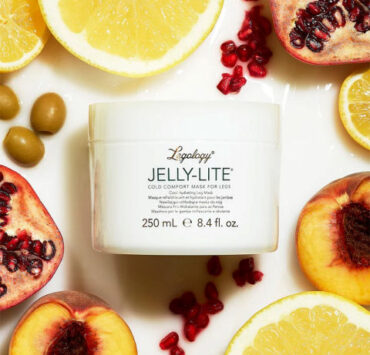Perfume Is Like Love, It Can Conquer Anything – Part 1: The Rose
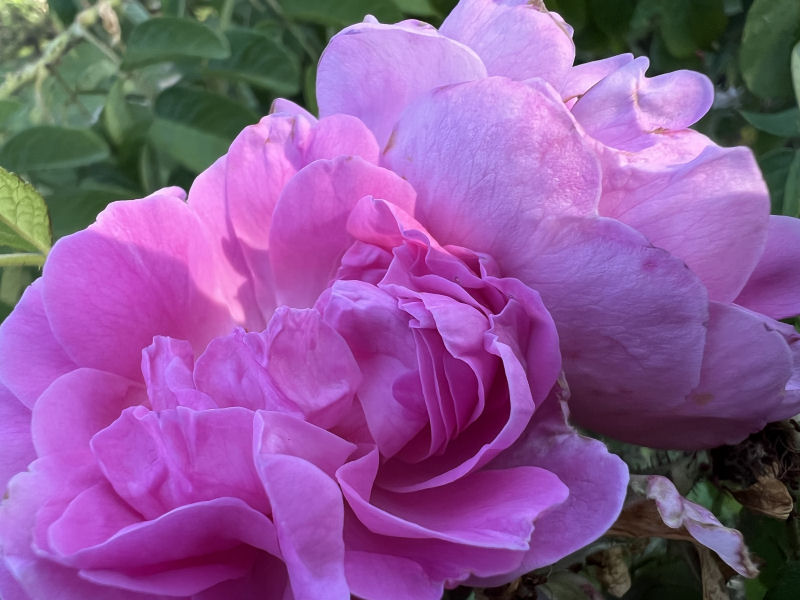
If there was a popularity contest for flowers, the Rose would undoubtably win. She is known as the queen of the flowers, and a symbol of timeless beauty. Unfortunately, the depth, versatility, and history of the Rose has been lost. In modern society, people see only a few of the ways the Rose has been used for centuries. An example is the Rose’s fragrance which, people often say, reminds them of their grandmother’s perfume.
It was not always this way.
The Rose has had an illustrious past. For centuries, it was renowned for its versatility, beauty, and fragrance. This beautiful flower was used extensively in perfumes, gastronomy, art, and religion. The cities, temples, homes, and gardens all featured this one enigmatic and beguiling flower. In this feature, I will share with you the Rose’s history, attributes, and uses. You can see why it could be the flower to use most in fragrance and how it is the best flower for wellness.
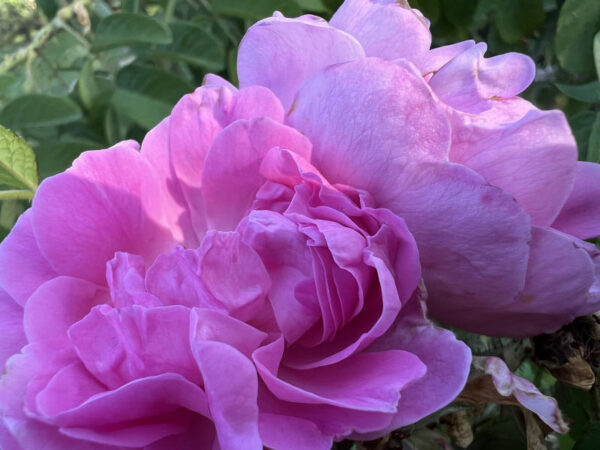
Our journey begins in Magna Grecia, a place for the ancient Greek colonies in southern Italy. Around the 8th Century BCE. Greek settlers came and brought with them culture, art, philosophy, architecture, gastronomy, and the Damask Rose. This cross-cultural blending would soon influence Rome and the entire Mediterranean now and for years to come.
One particularly important city was Poseidonia. Later (around 273 BCE), when the Romans controlled this area, the name changed to Paestum (which will be used throughout this feature). This ancient metropolis was famous for its unique import/export (including Roses, olives, and fermented spices), architectural splendor, and skill in the cultivation of Roses. Today, the temples are a marvel, showing the influence, wealth, and cultural sophistication this city had.
The Rose was called Rosa Damascena (Damask Rose), or Rose Bifera, meaning blooms twice a year. The city’s residents were responsible for this occurrence, and it was due to the quality of the soil. The Rose Bifera was considered to be truly precious, like the most valued gemstones. As far as your eye could see, fragrant Roses bloomed in Paestum and were utilized in everything. It was the soul of the city, which made Paestum known as the City of Roses.
The perfumers played a vital role in the city. They were cultivators, curators, and craftsmen of the Rose. The created a profitable trade, because Damask Rose and her perfumes were exported to Egypt and other parts of the Mediterranean.
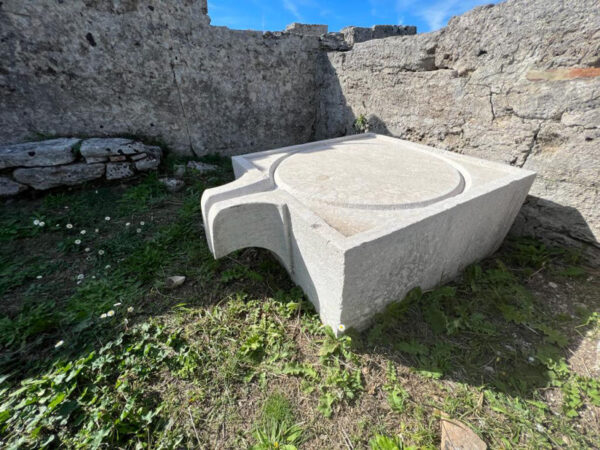
The Rose’s flower petals, perfumes, and aromatic waters adorned people, houses, and the statues installed in temples. The flower was an integral part of city life. The doctors used the rose as a medicinal cure by having rooms perfumed with Rose oil so a patient could meditate inside, and the fragrance would help to boost their healing.
Today, if you visit Paestum, you will find what is proven to be a perfumer’s workshop. In the lab, there stands a marble podium which was operated as an ancient press for Rose and olive oil. Massive quantities of Rose petals were pressed with green olives to make a perfume. In Delos, Greece, an identical podium was found; it happened to be uncovered in a perfumer’s workshop.
The Rose was famous throughout the Mediterranean. Rhodes was named after the Greek word for Rose: rhodon. The island’s currency was a coin that featured the sun god Helios on one side, and the representation of a rosebud on the reverse.
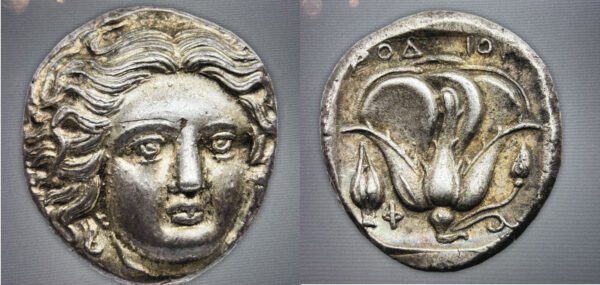
While the city of Pompeii is best known for being destroyed by Mount Vesuvius’s eruption, it was long an arbiter of the queen of flowers. The Rose was a beloved bloom. And, due to its visual beauty and artistic impact, it was commonly used in the city’s celebrations, festivals, and religious rituals.
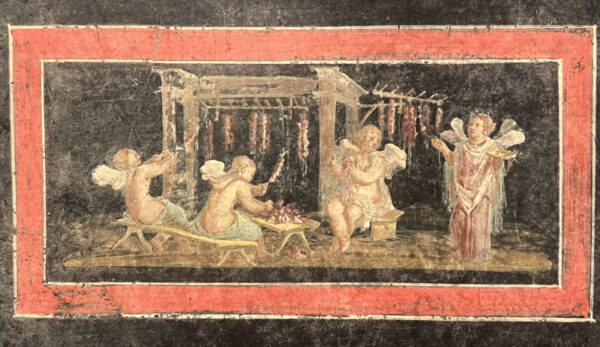
50—79 CE.
Los Angeles, John Paul Getty Museum, Getty Villa in Malibu.
The Pompeians also known as Romans, appreciated Roses for their aesthetic beauty and fragrance. The Rose symbolized love and had a connection to the goddess Venus. The myth is, one day Venus was rushing to help her lover Adonis. She pricked her foot on a thorn and her blood turned the white roses to red. This could explain the origin of how the red Rose is a symbol of love, beauty, and devotion.
“The Rose is the perfume of the gods, the joy of men. It adorns the graces at the blossoming of love. It is the favorite flower of Venus.” – Anacreon
Rosa Damascena was renowned not only for its fragrance. It was acknowledged as a symbol of timeless beauty, resilience, and the profound connection between God, nature, and the human experience.
In my last article about Perfume (link here), I shared how fragrance has been proven to be endorphin-raising, mood-enhancing, and confidence-building. In part three of Perfume, I discuss the Rose’s role in gastronomy, perfume, and skincare. Due to the biologically active compounds in Damask Rose oil, it could be, like love is, the most important ingredient to help you conquer anything.
Aristotle may have had Jeffrey Paul in mind when he said, “Art completes what nature cannot bring to finish.” Jeffrey is an award-winning makeup artist and hairstylist. For 20 years and counting, he is Hollywood’s and Bollywood's go-to artist for celebrities, film festivals, red carpets, fashion, and movie PR. He is a resource for makeup artists, beauty columns fashion & beauty blogs as well as beauty magazines including ELLE, InStyle, Harper’s Bazaar, and beauty how-to books. Additionally, he is a chef, perfumer, writer, wellness advocate, beauty advisor, leader in Sufi and beauty meditations groups, and a practicing Dervish. Jeffrey believes that today's world has prompted everyone to have a deeper reverence for life and nature. His passion for truth, accompanied by an exploration into spirituality, has led him to create a new perspective in the beauty world. Through a blend of aesthetics and wellbeing, Jeffrey created a new paradigm called Beauty as Wellness, which includes the in-development Fragrance as Wellness. Jeffrey teaches people how to look deep into the world of beauty, which includes all types of fragrance, find tools to infuse and support a healthy life. This spiritual adventurer currently lives in Los Angeles. He spends time on the east coast to look after his parents. Follow him on Instagram – @theperfumeyogi, @fragranceaswellness, @jeffreypaulbeauty – and see him being a hair and makeup artist who seeks, and presents, the soulful expression of beauty.

